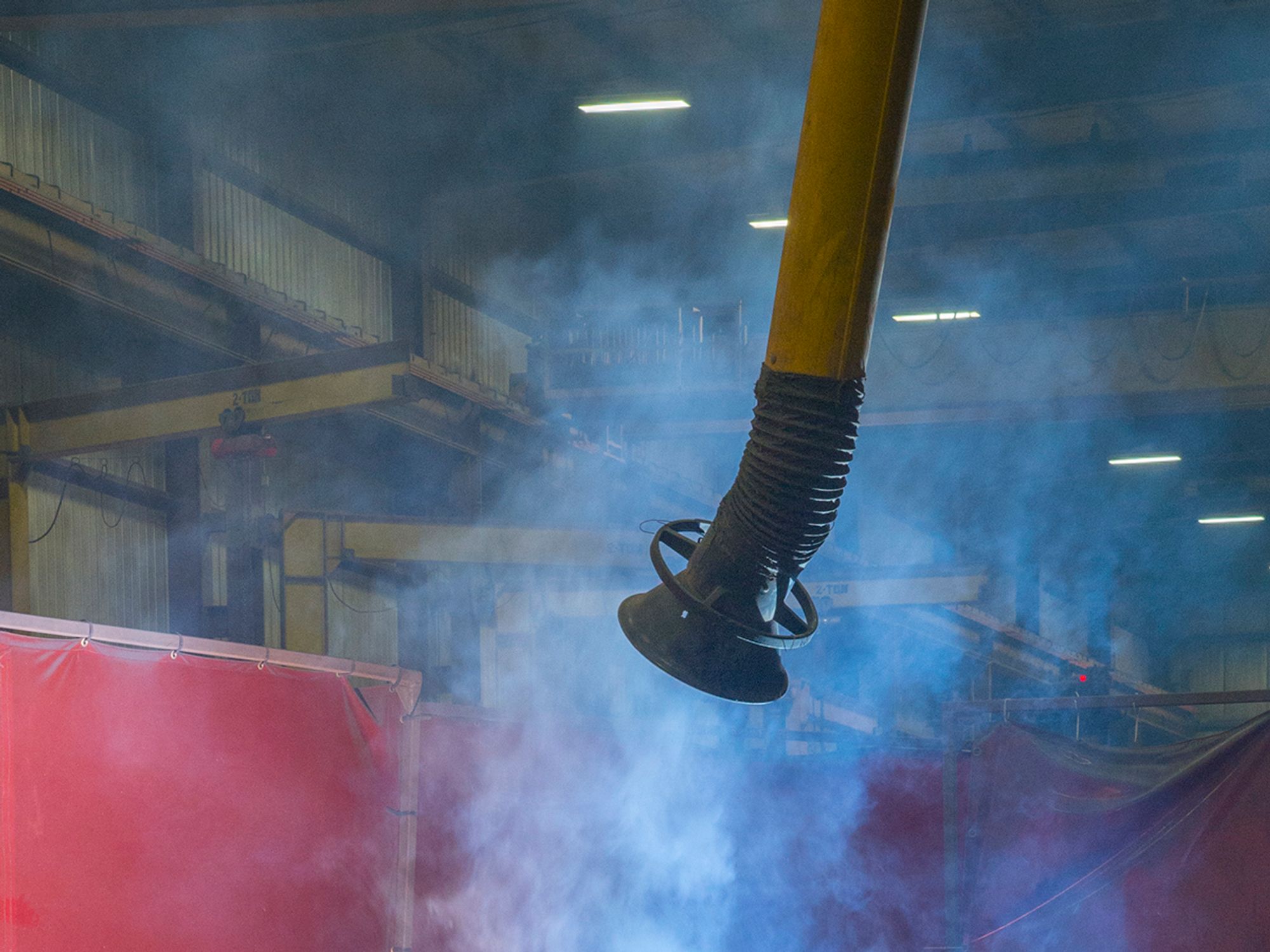- Key terms for ventilation are defined in this section.
Key terms commonly used with ventilation controls are defined in this section. It’s important to understand these terms to ensure uniformity with safety plan development, communication, and development.
- Abrasive: A solid substance used in an abrasive blasting operation.
- Abrasive blasting: The forcible application of an abrasive to a surface by pneumatic pressure, hydraulic pressure, or centrifugal force.
- Abrasive-blasting respirator: A respirator constructed so that it covers the wearer’s head, neck, and shoulders to protect from rebounding abrasive.
- Abrasive cutting-off wheels: Organic-bonded wheels, the thickness of which is not more than one forty-eighth of their diameter for those up to, and including, 20 inches in diameter, and not more than one-sixtieth of their diameter for those larger than 20 inches in diameter, used for a multitude of operations variously known as cutting, cutting off, grooving, slotting, coping, and jointing, and the like. The wheels may be solid, consisting of organic-bonded abrasive material throughout; steel centered, consisting of a steel disc with a rim of organic-bonded material molded around the periphery; or of the inserted tooth type, consisting of a steel disc with organic-bonded abrasive teeth or inserts mechanically secured around the periphery.
- Blast cleaning barrel: A complete enclosure which rotates on an axis, or which has an internal moving tread to tumble the parts, in order to expose various surfaces of the parts to the action of an automatic blast spray.
- Blast cleaning room: A complete enclosure in which blasting operations are performed and where the operator works inside of the room to operate the blasting nozzle and direct the flow of the abrasive material.
- Blasting cabinet: An enclosure where the operator stands outside and operates the blasting nozzle through an opening or openings in the enclosure.
- Dust collector: A device or combination of devices for separating dust from the air handled by an exhaust ventilation system.
- Exhaust ventilation system: A system for removing contaminated air from a space, comprising two or more of the following elements: (a) enclosure or hood, (b) duct work, (c) dust collecting equipment, (d) exhauster, and (e) discharge stack.
- Minimum maintained velocity: The velocity of air movement which must be maintained in order to meet minimum specified requirements for health and safety.
- Particulate-filter respirator: An air purifying respirator, commonly referred to as a dust or a fume respirator, which removes most of the dust or fume from the air passing through the device.
- Polishing and buffing wheels: All power-driven rotatable wheels composed all or in part of textile fabrics, wood, felt, leather, or paper, that may be coated with abrasives on the periphery of the wheel for purposes of polishing, buffing, and light grinding.
- Respirable dust: Airborne dust in sizes capable of passing through the upper respiratory system to reach the lower lung passages.
- Rotary blast cleaning table: An enclosure where the pieces to be cleaned are positioned on a rotating table and are passed automatically through a series of blast sprays.
- Scratch brush wheels: All power-driven rotatable wheels made from wire or bristles and used for scratch cleaning and brushing purposes.
- Spray-finishing operations: The employment of methods wherein organic or inorganic materials are used in dispersed form for deposit on surfaces to be coated, treated, or cleaned. Such methods of deposit may involve either automatic, manual, or electrostatic deposition but do not include metal spraying or metallizing, dipping, flow coating, roller coating, tumbling, centrifuging, or spray washing and degreasing as conducted in self-contained washing and degreasing machines or systems.
- Spray booths: Defined and described in 1910.107(a).
- Spray room: A room in which spray-finishing operations not conducted in a spray booth are performed separately from other areas.


